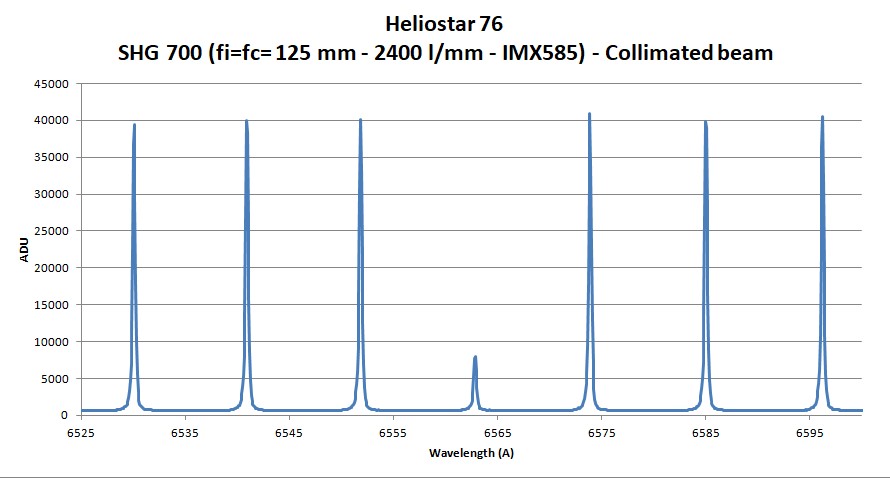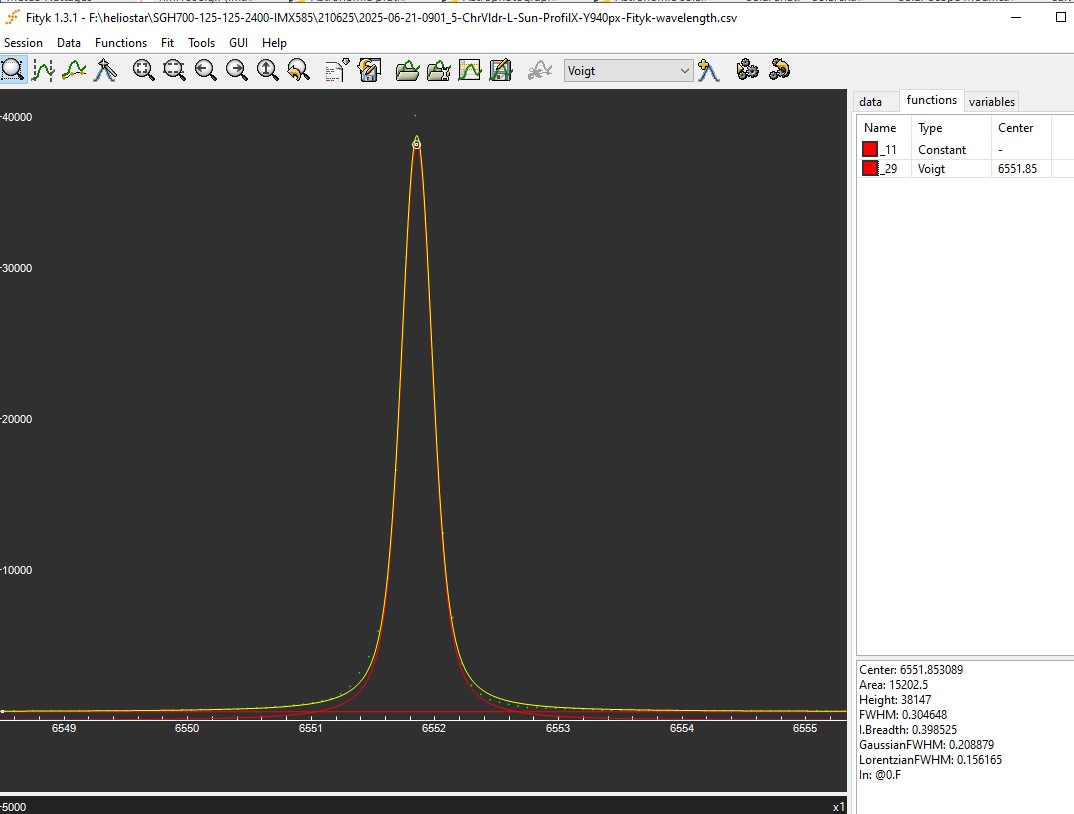Overall results
| Test method | f-ratio | Surface sampled | FSR | FWHM | Delta CWL | Note | |
| Heliostar 76 mm (#1) |
Spectro - SHG7 (fi=fc=125 mm, 2400 l/mm, 10 micron slit) |
collimated |
full aperture |
11.0 A | 0.25 A |
||
The transmission curve of the etalon is a textbook Lorentzian.
Measured value of FWHM is conservative.
Spectro measurement in a collimated beam
Optical setup: Sun => Heliostar tuned to Ha (without BF) => SHG700 with 10 microns x 4.5 mm slit, fc = f i =125 mm, 2400 l/mm grating, PO IMX585, 0.0755 A/pixel dispersion, measured spectral resolution = 0.18 A
Spectrum of the ten transmission "teeth" centered on Ha :

Transmission profile:

The transmission profile is text book Lorentzian. The FSR is 11.0 A
Measurement of the FWHM and fitting with a Voigt function:

While the transmission profile is text book Lorentzian, the profile of transmission was curve-fitted with a Voigt function in order to avoid an "overshoot" of the measured peak transmission. Using a Voigt function, we can see than the max of the fitted curve is indeed lower than the actual measured max. It results that the measured FWHM (0.30 A) is conservative. The actual FWHM is smaller.
In spite of 5 measured points above 50% peak transmisison, fitting with a Lorentzian function would result in the max of the fitted curve higher than the actual max measured, and in a possible under-estimation of the FHWM.
So, in order to have a conservative estimation of FWHM, a Voigt function was prefered.
NB : all peaks of transmission are the same 0.3 A FWHM.
Because the measured FWHM (0.30 A) is close to the spectral resolution of the SHG (0.18 A), it is necessary to deconvoluate the measured FWHM by the spread function of the SHG.
The relation is : measured FWHM^2 = actual FWHM ^2 + spectral resolution ^2
Finally, we have:
FWHM = 0.25 A and FSR = 11.0 A